Genre: Platform Developer: Ancient Publisher: Sega of America Players: 1 Released: 1991
It would be helpful to come straight out and tell the reader that this was the first Sonic game I ever played. I came home one day and found my dad had rented a Sega Master System with Sonic The Hedgehog from the video store. If I recall correctly, we had it for about a week and I could barely be torn away from it. Hang-On was built into the system but that saw little playtime. I got all the way to the end but didn’t finish it. That achievement came years later and after I had played to completion the entire 16-bit library of Sonic games (including Sonic 3D Blast). As your firsts tend to do, this one stuck with me and while it is not my favourite in the Sonic series, I have always liked it more than it’s technically superior 16-bit older brother.
Sonic The Hedgehog on Master System came out in late 1991 and after the Mega Drive/Genesis release. Thankfully it wasn’t just a limited port but very much its own game, keeping some things familiar while playing to the consoles strengths. Three of the zones (Green Hill, Labyrinth and Scrap Brain) will be familiar but all have been redesigned keeping only the zone aesthetic. The gameplay is essentially the same and Sonic moves and controls much like the 16-bit version. The power-ups are the same, there are chaos emeralds and Sonic will still run into Dr. Robotnik at the end of each zone.
Sonic on Master System makes many subtle changes to the gameplay of the original. The chaos emeralds rather than being earned in special stages can be found within each of the six zones. A bonus stage is still earnable at the end of an act and features a colourful arena full of springs, rings and at least one 1up and a continue can be earned within. There are also a few levels that mix up the gameplay such as the second act of Bridge Zone which auto-scrolls and the second act of Jungle Zone, where Sonic must ascend to the finish. The latter is made more difficult as platforms below you are cut off once the screen scrolls upwards and a fall results in death. For the most part though, the levels are there for Sonic to race from left to right finding shortcuts, secrets and bouncing from platform to platform.
Early Sonic games weren’t known for their difficulty and this title perhaps sets the precedent. The first two zones are a breeze and apart from some potentially tricky platform sections later on, the rest of the zones aren’t much more difficult. Scrap Brain Zone mixes the gameplay up in one act with a clever maze but Labyrinth Zone is ironically straightforward. While most of the bosses in the game are pushovers, the final boss can be quite difficult. Even with that added challenge, an experienced player will probably have more than enough lives and continues to win out. As with many games in the series, this isn’t a problem because of how consistently enjoyable the gameplay is.
While the game obviously has nowhere near the visual depth of the 16-bit version, it looks fantastic when compared to other Master System titles. The backgrounds are simple but that they are there at all is impressive on a system where the only thing that distinguished many backgrounds was the colour. Sonic and other sprites are small but detailed enough to easily recognize. Sonic has been known for speed and the game moves at an impressive speed though there is significant slowdown when too much is on screen at once. This certainly is a detriment to the gameplay, especially when moving between platforms but it is never frequent enough to ruin the overall experience.
What really distinguishes Sonic on Master System from the original is the soundtrack. Many jingles and sound effects are familiar and Green Hill Zone has the same classic tune but most levels have original tunes composed by the legendary Yuzo Koshiro. The music is consistently upbeat and the catchy Jungle Zone theme is a major reason why it is one of my favourite zones in the series. The soundtrack for Sonic The Hedgehog is one of, if not my favourite soundtracks on the system.
It is very hard not to compare this game to the original, and that’s why I didn’t even try not to. The comparisons actually highlight how well the gameplay and aesthetic was translated to more limited hardware without just making a simple port. These distinctions make the game worth checking out for anyone who played the original. As stated in the second paragraph, the developers designed the game to the systems strengths rather than porting a limited version of the 16-bit experience and that’s why the game has become a classic in its own right and one that can still be enjoyed today.
SCORE: 9 out of 10

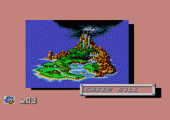
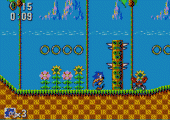
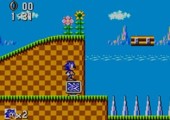
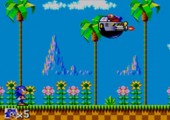
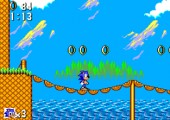
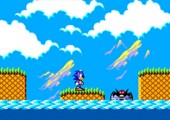
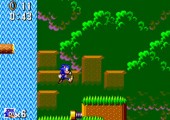
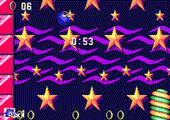

Pingback: Video Game Reviews and Articles | The Essential Malady
Pingback: Video Game Reviews & Articles | The Essential Malady
Pingback: Sega-16 Articles |
7/10 for me. A really good game the first time or two through, I even got all the emeralds but it’s just not as good as some of the other games on the system and doesn’t have the replay value so I have to rate it lower.
Memories! Totally different game than the Gen/MD version, but man, this game is awesome… and the music! Bridge Zone theme ftw…
Remix: https://www.youtube.com/watch?v=KVTi3sYVIls
Man, loved this one on MS. Played at my bud’s house as an excuse to chat to his cute sister. Ah the memories.